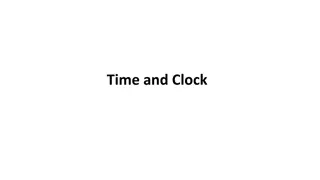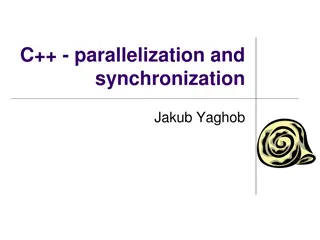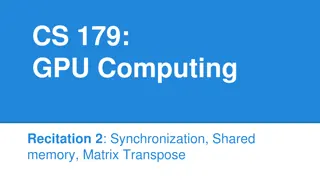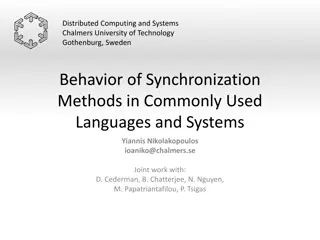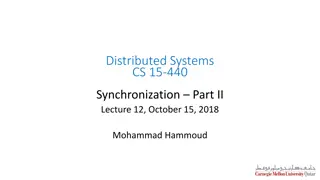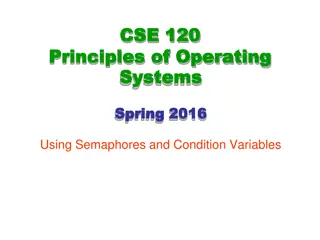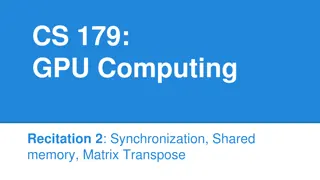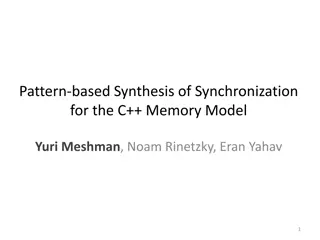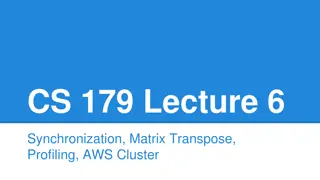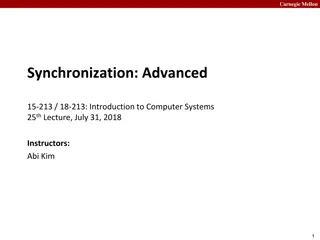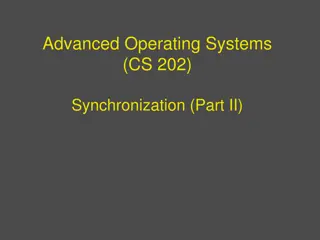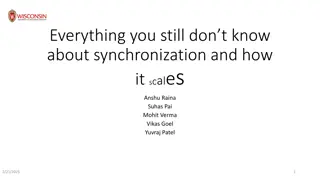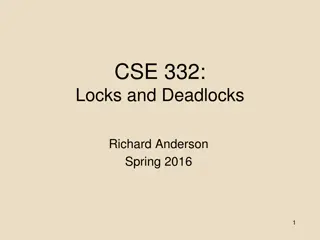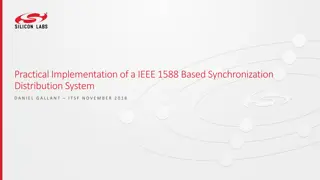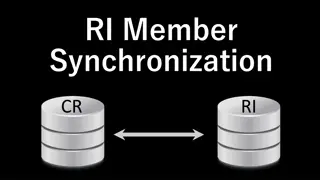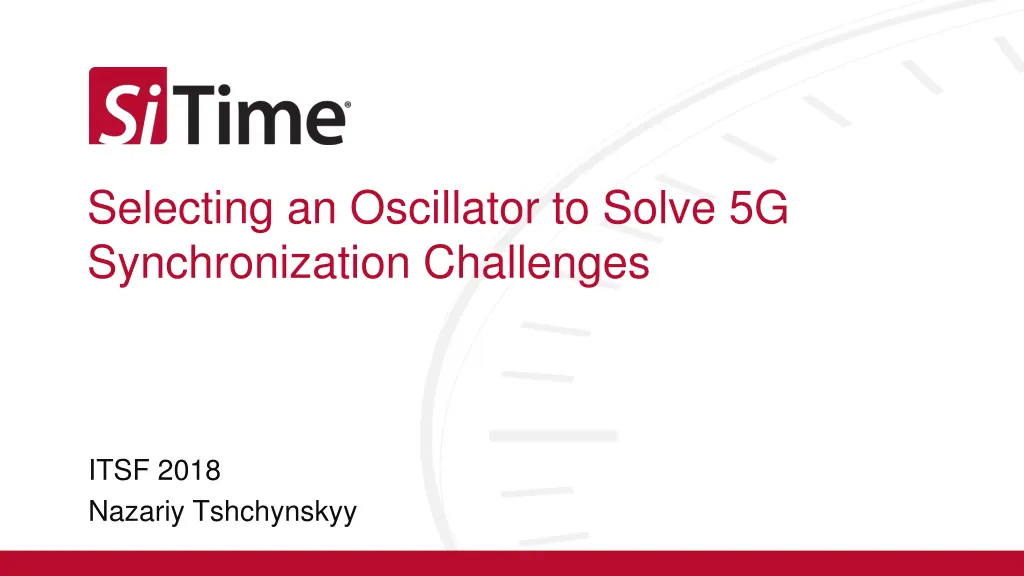
Optimizing Oscillator Selection for 5G Synchronization
Discover the crucial factors driving oscillator requirements for efficient 5G synchronization, including system architecture, environmental conditions, and the impact on performance metrics. Learn about the use of SyncE and PTP hybrid mode, as well as advancements in MEMS technology for improved dynamic performance and temperature compensation.
Download Presentation

Please find below an Image/Link to download the presentation.
The content on the website is provided AS IS for your information and personal use only. It may not be sold, licensed, or shared on other websites without obtaining consent from the author. If you encounter any issues during the download, it is possible that the publisher has removed the file from their server.
You are allowed to download the files provided on this website for personal or commercial use, subject to the condition that they are used lawfully. All files are the property of their respective owners.
The content on the website is provided AS IS for your information and personal use only. It may not be sold, licensed, or shared on other websites without obtaining consent from the author.
E N D
Presentation Transcript
Selecting an Oscillator to Solve 5G Synchronization Challenges ITSF 2018 Nazariy Tshchynskyy
What is driving oscillator requirements? System architecture - SyncE (MTIE, TDEV G.8262) - PTP (Time Error) - PTP + SyncE Hybrid Mode (G.8262, Time Error G.8273.2) - Holdover requirements Environment conditions - Magnitude of Temperature variations - Speed of Temperature variations - Breezy air 2
PTP + SyncE (Hybrid Mode) is most commonly used Hybrid mode uses SyncE physical layer frequency to assist PTP Helps to achieve Time Error performance Hybrid mode means stable reference clock traceable to PRC as reference to PTP Boundary Clock model according to ITU-T G8273.2 Simplified Boundary Clock model according to ITU-T G8273.2 3
SyncE Requirements Stability of Local Oscillator has direct impact on Wander Generation performance defined in ITU-T G.8262 Wander generation (TDEV) for EEC-Option 1 Wander generation (TDEV) for EEC-Option 2 4
SyncE Performance in Breezy Air Airflow fluctuations are modulating frequency of the local oscillator MEMS TCXO s can track fast airflow changes (Breezy Air) 0.1 Hz PLL BW 3 Hz PLL BW 5
DualMEMSTM with TurboCompensationTM Enables Highest Dynamic Performance MEMS Thermally Coupled On-Chip Regulators Mixed-Signal CMOS IC TempFlat Resonator Dividers & Driver Frac-N PLL Frequency Synthesis OSC- Timing CLK Temp Sense (TDC) Temp Comp OSC- Temp VCXO ADC I/O Temp Sensor I2C Vctrl OE DualMEMS 100% Thermal Coupling 30 K, 10x more accurate 350 Hz tracking, 40x faster Airflow, temp ramp resistant Temp Sensing TempFlat No aging No activity dips 30x better vibration immunity MEMS Resonator 6
MEMS Temperature Sensor Advantages Elite DualMEMS Temperature Sensor DualMEMS Resonator Die Quartz TCXO Quartz temperature matters Metal Lid TempFlat Resonator Quartz CMOS Temp Sensing Resonator Temperature sensor measures IC temperature Limited thermal coupling between Quartz and IC Analog noisy temp sensor Limited compensation of slow temperature changes only Higher order large dF/dT residues Best thermal coupling between two MEMS resonators in same die Digital low noise high bandwidth TDC Enables compensation of fast temperature changes Higher order compensation enables smallest dF/dT residue 7
PTP Performance without SyncE (model) Frequency vs Temperature 1 day aging f (ppb) f (ppb) T1 T2 T ( C) time (s) Temperature Profile T ( C) Dwell time = 15 min Ramp rate = 0.5 C/min PLL response model Time error (t) TCXO frequency in time Time_error (s) T2 H(f) f (ppb) t T1 0 1.5us /(2 fc) f(t) (t) + time (s) time (s) time (s) -1.5us f Frequency change in time (due to temperature) f (ppb) Frequency fluctuations at constant temperature f (ppb) time (s) time (s) 8
PTP Time Error (without SyncE) Sync loop Time constant = 100s; Temperature change rate = 1 C/min T-BC requires 100ns or 70ns Max Time Error Generation +100 ns -100 ns 9
PTP Time Error (without SyncE) Sync loop Time constant = 20s; Temperature change rate = 10 C/min +100 ns -100 ns T-BC requires 100ns or 70ns Max Time Error Generation 10
PTP+SyncE Performance SyncE assists PTP by providing frequency reference traceable to PRC Bandwidth of SyncE loop is faster than PTP and can vary from 0.1Hz to 10Hz Local oscillator is synchronized to PRC with 0.1Hz to 10Hz BW equivalent of having more stable local oscillator Temperature sensitivity of local oscillator is filtered by SyncE loop which allows keeping the performance, but using less stable oscillator Choosing poor stability TCXO may violate MTIE/TDEV wander generation requirement, especially under environmental stressors! 11
PTP+SyncE Reduces TE Generation SyncE BW = 0.1Hz; Temperature change rate = 10 C/min T-BC requires 100ns or 70ns Max Time Error Generation +100 ns -100 ns 12
Holdover Challenges When both SyncE and PTP is lost device enters holdover mode Holdover performance is defined by the local oscillator Good OCXO is required to extend holdover time Holdover measurement can be time consuming and difficult Simulation can be used to speed up Holdover evaluation 13
Holdover Simulation Input data used for Holdover simulation - Frequency vs Temperature characteristic of the oscillator - Drift rate of the oscillator - 24 hours of continuous oscillator frequency data at constant temperature - Temperature change profile in the application It is important to sweep starting point of Holdover calculation in time with fine step 14
Holdover Simulation Model Frequency vs Temperature ~0.3 ppb/ C 1 day aging f (ppb) f (ppb) ~0.01 ppb/ C T1 T2 T ( C) time (s) Temperature Profile T ( C) Dwell time = 15 min Ramp rate = 0.5 C/min Time error (t) OSC frequency in time Time_error (s) T2 f (ppb) t T1 0 1.5us f(t) (t) /(2 fc) + time (s) time (s) time (s) -1.5us Frequency change in time (due to temperature) Time Error in Holdover varies a lot depending on the starting point of Holdover f (ppb) Frequency fluctuations at constant temperature Move starting point of Time Error accumulation along time axis with fine step (<= 500s). This models entering holdover at arbitrary moments in time. f (ppb) time (s) time (s) 15
Holdover Simulation Temperature Profile Temperature is constantly cycled between T1 and T2 with rate of change 0.5 C/min After achieving high or low extreme temperature is held constant for 15 min Low Temperature T1 = 45 C High Temperature T2 = 55 C Temperature Profile T ( C) Dwell time = 15 min Ramp rate = 0.5 C/min T2 T1 time (s) 16
Holdover Simulation Results Better dF/dT of MEMS TCXO leads to 3x longer Holdover time 50 ppb Quartz TCXO Min Holdover 5 min 100 ppb MEMS TCXO Min Holdover 15 min 17
Holdover Simulation Results Excellent dF/dT of MEMS OCXO ensures at least 2 hour Holdover time 10 ppb Quartz OCXO Min Holdover ~13 min 5 ppb MEMS OCXO Min Holdover 2 hours! 18
MEMS OCXO achieves 0.1 ppb/C dF/dT 3 ppb <0.1 ppb/ C 19
Conclusions Good TCXO is required to meet SyncE Wander Generation specifications (MTIE and TDEV) MEMS TCXO can achieve better Wander in real environment by minimizing dF/dT and tracking airflow changes Stable oscillator with low dF/dT is required for good Holdover time 100ppbMEMS TCXO can have similar to 10ppb OCXO holdover due to comparable dF/dT 5 ppb MEMS OCXO has excellent dF/dT and can significantly extend Holdover time of a system 20




